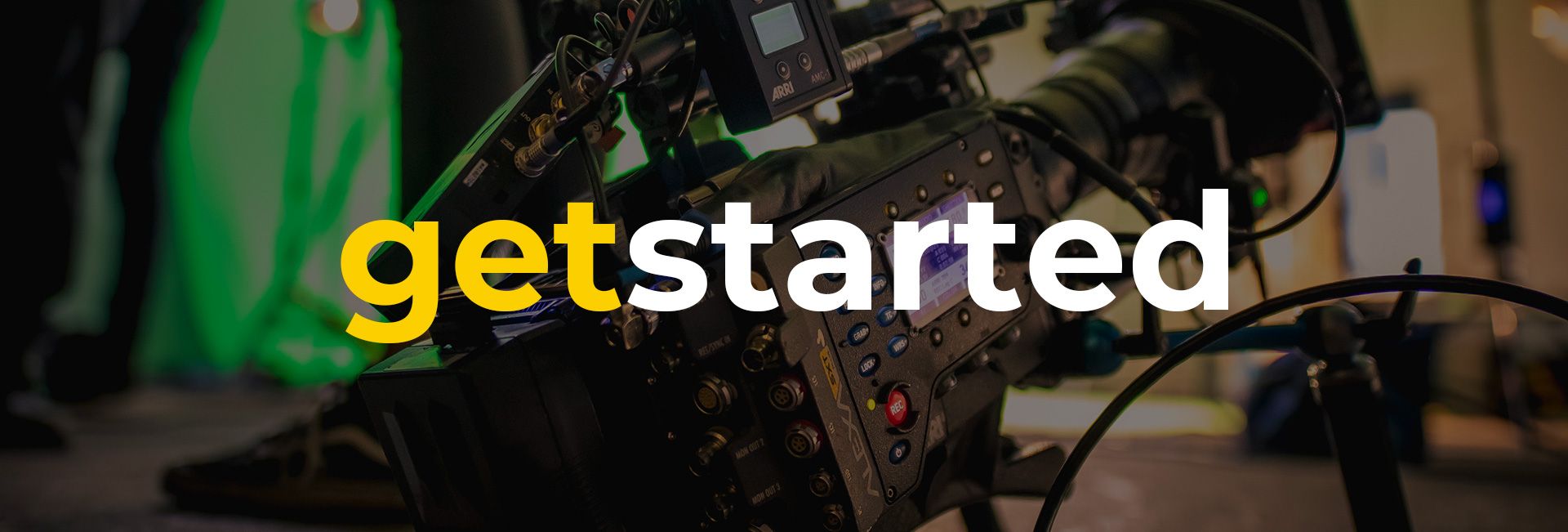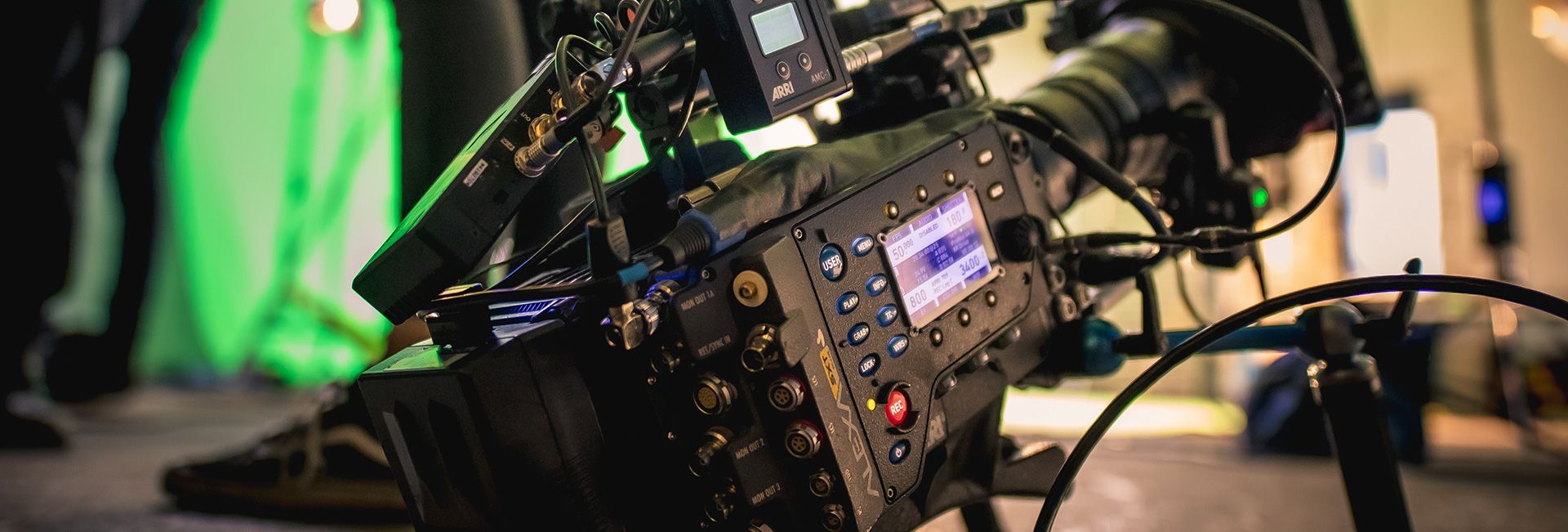
In the first part of our Get Started series; we're looking at the trusty matte box.
Matte boxes make your rig look good but what are they actually used for and how can they help you make better films?
Sure; sticking one of these lovely things on the front of your rig immediately identifies you as a filmmaker and impresses the clients but do you really need a matte box or are they just for the cool kids?
Let's take a look at what the matte box is and why you do actually need one.

Matte boxes
Some types of lens flare can be used for aesthetic reasons, for example; JJ Abrams (among many others) is a big fan of the blue flares you can get from using anamorphic lenses, but aesthetics aside; you generally don't want lens flares.

Lens flaring can occur when a light source such as the sun or artificial lights, strikes the front of the lens at a certain angle and then bounces across different surfaces to produce glare in the image. Using additional filters in front of the lens can increase the chances of flaring. The effects of lens flares can wreak havoc on the final image. This includes halos and streaks of light or an overall decrease in image contrast.
Many believe that the matte box is only used when using filters and/or you're worried about lens flares but that's not the case.
Decreased contrast and resolution may not be as detectable as lens flare, but it can seriously degrade the quality of the image. Although some contrast and sharpness can be added in post production, it's far from ideal and it’s always best to limit the amount of unnecessary post processing.
A lens shade helps block direct light sources from hitting the lens or filters and is is essential in order to maintain critical sharpness.
Many photography lenses come bundled with specially fitted lens shades that mount directly onto the front of the lens. These are good for blocking lens flare and limiting the risk of losing contrast in the image. It is also the most economical solution to prevent or limit lens flare, but does not offer the level of control of a matte box.
The difference between a regular lens shade and a matte box is that a matte box offers more light-sealing capabilities, as well as the option to use drop-in filters (on most models). Although screw-in filters are cheaper and more widely available, the drawback is that they come in specific sizes and can't be used on multiple lenses (only adapter rings). Switching lenses during a shoot can take more time if it’s necessary to swap filters and adapters from one lens to another. Drop-in filters also offer more creative options, such as the use of a graduated ND filter to position the transition at the right point in the frame (e.g. the horizon).
Sometimes, it's possible to clip a matte into the matte box so that the camera sees through a rectangular hole that’s just fractionally bigger than the frame — this is where the term “matte box” comes from. While this technique can greatly minimize stray light by reducing the visible part of the lens to exactly what is required to get the shot, the matte itself can act as a kind of external iris and reduce exposure, so testing and caution are necessary.

Mounting
The mounting of the matte box needs to be straightforward and secure, so it won’t fall off while the camera moves around.
There are two main options for mounting the matte box to the lens: clamped directly to the front of the lens, or mounted on industry-standard rods, also called a "bayonet" mount.
Clamp-on matte boxes are usually smaller, weigh less and are less costly. The drawback of clamp-on matte boxes is that they're not efficient for use on multiple lenses, especially different-diameter lenses, and can’t easily be used on external-focus lenses.

When time (or money) is of the essence, every additional task adds up quickly during a shoot. Changing lenses can be either a matter of seconds or minutes. While every setup is different, being able to swap lenses without loosening and/or dismounting the matte box is a very nice option.
Swing-away matte boxes are not directly mounted onto the rod system, but onto a hinge that mounts to the rods. This allows the matte box to be opened and closed like a door, without removing it from the rods. Some companies offer swing-away adapters that can turn their standard matte box into a swing-away version.

Flags
Flags, or French flags, offer additional flare protection for addressing issues with specific light sources. The angle of the flag can be adjusted, usually by loosening a screw and re-tightening. The most common type is a top flag, but side flags are used for even greater control.
Filter trays / Stages
There are two main types of trays: fixed and rotating. Rotating trays are used for graduated filters to align the horizon, or for polarizing filters, which must be rotated until the appropriate amount of reflection reduction is achieved. A good matte box will have at least one fixed and one rotating filter tray.
There are different standard-size filters. Matte boxes are designed for either a range of sizes or for one particular standard. While there are several standards of filter sizes, 4 x 5.65 is better suited to the 16:9 widescreen format. Larger sizes, of 5.65 x 5.65 or 6 x 6 are typically used for rotating filter stages. Certain filter trays can be adapted to accept different filter sizes.

Mattes
Mattes are designed to further reduce light leaks into the lens elements by masking the edges of the lens. The right size matte is determined by the aspect ratio of the video camera (e.g. 4:3, 16:9) as well as the angle of view of the lens being used. Many matte boxes come packaged with different-sized mattes.
Step-Down / Donut Rings
When the matte box is clamped directly onto the lens without rods, step-down or donut rings may be required to fit different lens diameters.

Donuts
For "bayonet," or rod-mounted matte boxes, a donut is mounted between the matte box and tightly around the lens diameter so that no light can leak in, bounce around and cause lens flaring. Most matte boxes include several sizes of donuts that will fit a range of lens diameters.
For external zoom, or external focus lenses, it may be better to use a donut that stretches to allow the front of the lens to extend and retract without falling out of the donut.
Hire
We have a range of matte boxes from Fotga, Genus, Chrosziel and Bright Tangerine available through our equipment hire, so drop us a line if you're in need of shading that lens.